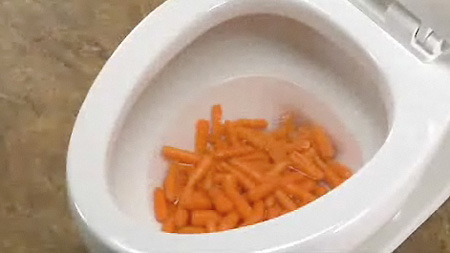Is it Sensible to Flush Food in the Toilet?
Is it Sensible to Flush Food in the Toilet?
Blog Article
Just how do you really feel with regards to Is it safe to flush food (especially rice) down the toilet??

Intro
Lots of people are commonly confronted with the issue of what to do with food waste, specifically when it pertains to leftovers or scraps. One typical concern that arises is whether it's fine to flush food down the commode. In this write-up, we'll delve into the reasons why individuals might take into consideration purging food, the consequences of doing so, and alternative approaches for appropriate disposal.
Reasons that people could consider flushing food
Lack of understanding
Some people may not be aware of the possible harm triggered by purging food down the toilet. They may erroneously think that it's a harmless practice.
Comfort
Purging food down the toilet might look like a quick and simple service to throwing away undesirable scraps, specifically when there's no close-by trash can available.
Idleness
In some cases, individuals may merely pick to flush food out of large laziness, without thinking about the consequences of their actions.
Repercussions of flushing food down the commode
Environmental influence
Food waste that ends up in waterways can add to air pollution and damage marine communities. In addition, the water utilized to flush food can strain water sources.
Plumbing problems
Flushing food can bring about blocked pipelines and drains pipes, creating pricey plumbing repairs and aggravations.
Kinds of food that need to not be purged
Coarse foods
Foods with coarse structures such as celery or corn husks can get tangled in pipelines and create obstructions.
Starchy foods
Starchy foods like pasta and rice can absorb water and swell, resulting in obstructions in pipelines.
Oils and fats
Greasy foods like bacon or cooking oils should never ever be flushed down the commode as they can solidify and create obstructions.
Proper disposal techniques for food waste
Using a waste disposal unit
For homes outfitted with garbage disposals, food scraps can be ground up and flushed via the plumbing system. Nevertheless, not all foods appropriate for disposal in this way.
Recycling
Specific food product packaging products can be reused, lowering waste and reducing environmental influence.
Composting
Composting is an eco-friendly method to deal with food waste. Organic products can be composted and made use of to enrich dirt for horticulture.
The importance of appropriate waste monitoring
Decreasing environmental damage
Correct waste administration practices, such as composting and recycling, aid decrease air pollution and maintain natural deposits for future generations.
Protecting pipes systems
By preventing the method of flushing food down the toilet, house owners can avoid expensive plumbing repair services and keep the integrity of their pipes systems.
Final thought
Finally, while it might be appealing to flush food down the toilet for convenience, it is necessary to comprehend the prospective repercussions of this action. By embracing proper waste management techniques and dealing with food waste responsibly, individuals can add to much healthier plumbing systems and a cleaner setting for all.
FLUSH FOOD DOWN THE TOILET?
FLUSHING FOOD CAN CAUSE BLOCKED DRAINS IN YOUR HOME
All of the plumbing fixtures in your home are connected to the same sewer pipe outside of your home. This outdoor sewer pipe is responsible for transporting all the wastewater from your home to the Council sewer mains. Even small pieces of food that go down the kitchen sink can cause problems for your sewer. It should therefore be obvious that flushing larger bits of food, such as meat, risks a clog in either the toilet itself or the sewer pipes. Flushing greasy food is even more problematic because oil coagulates when it cools, coating the interior lining of your pipes.
THE TOILET IS NOT A BIN
Food isn’t the only thing that people shouldn’t be flushing down the toilet. People use the toilet to dispose of all kinds of things such as tampons, makeup wipes, dental floss, kitty litter and even underwear. Water goes to great lengths to educate residents about the high costs and stress placed on wastewater treatment systems simply from people flushing the wrong stuff down the toilet. It costs taxpayers millions of dollars each year, and homeowners thousands in blocked drain repairs.
FLUSHING FOOD IS A WASTE OF WATER
Flushing food is a waste of our most precious resource - water. In June this year Level 1 water restrictions were introduced to protect water supply from drought conditions. Much of New South Wales continues to be affected by prolonged drought with recent figures revealing up to 97 per cent of the state remains in drought. Depending on whether you have a single or dual flush toilet, every single flush uses between five and 11 litres of water. In the current climate this is a huge amount of water to be wasting on flushing food that should be placed in the bin (or better yet, the compost).
https://www.jabplumbingsolutions.com.au/blog/can-you-flush-food-down-the-toilet

As a serious person who reads about Think Twice Before Flushing Food Down Your Toilet, I thought sharing that excerpt was smart. Loved our write up? Please share it. Let someone else discover it. I recognize the value of reading our article about .
Call Today Report this page